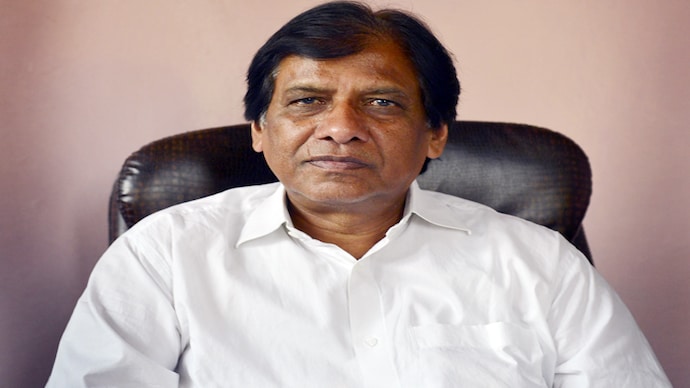Rabinder Singh 'money-trapped' by CIA for Iraq WMD info says book
Rabinder Singh, a retired army officer and joint secretary posted in R&AW headquarters, was compromised by the CIA sometime in the 1990s. In May 2004, Rabinder and his wife fled to the US with his wife via Nepal where they currently live under assumed identities.


A recently released book authored a former R&AW official has alleged that the CIA used its mole inside India's external intelligence agency to try and get information on Iraq's Weapons of Mass Destruction (WMDs).
Rabinder Singh, a retired army officer and joint secretary posted in R&AW headquarters, was compromised by the CIA sometime in the 1990s. In May 2004, Rabinder and his wife fled to the US with his wife via Nepal where they currently live under assumed identities.
'The CIA through R&AW wanted to have corroborative evidence from R&AW so that they could get an independent and unbiased intelligence assessment about Iraq, which would strengthen their case for world opinion in attacking Iraq for possession of WMD. Rabinder Singh on his part tried to get such reports from his connections in R&AW," RK Yadav, a former officer in the external intelligence agency, writes in "Mission R&AW". The book was formally launched in New Delhi on July 17 by former external affairs minister Natwar Singh.
Yadav quotes the findings of an internal investigation by R&AW to state that Rabinder's recruitment as a mole by the CIA had to do with the US spy agency's need for intelligence in the run-up to the March 2003 invasion on Saddam Hussein's Iraq.
'Operation Iraqi Freedom' was preceded by a year-long campaign where the US built up world opinion that Saddam Hussain's alleged development of nuclear and biological weapons and proximity to Al Qaeda made him a threat to the US. This was around the time, Yadav says, Rabinder Singh was on a 'spying spree' inside R&AW headquarters and worked for unspecified amounts of money which his handlers paid him.
Singh, Yadav writes, got several top secret files from SK Gupta, head of the agency's Science and Technology desk, photocopied them and sent them to the CIA.
R&AW's S&T desk set up by former DRDO scientist K Santhanam in the 1970s, had detected the Kahuta nuclear plant in Pakistan in 1978. Yadav however adds he has no corroborative evidence to prove that these reports were used by the CIA to build up their specious case for the invasion of Iraq.
Rabinder Singh's recruitment as a CIA mole also had to do with the US agency's failure of the CIA to detect India's 1998 Pokharan nuclear tests. The CIA, heavily reliant on technical intelligence for picking up signs of activity at test sites, then declared its intent to 'recruit agents in every field and department of the Indian government'.
During his stint at the head of the agency's South-East Asia division, Rabinder continued to seek information from other departments within the agency. This conduct aroused the suspicions of at least one mid-ranking official within the organization, S Chandrasekhar, who alerted the agency's counter-intelligence wing in January 2004. Rabinder was placed under intensive surveillance by the CIW for nearly four months.
Yadav's book alleges Rabinder Singh successfully escaped because certain senior officials in the agency and government were complicit in his getaway. The NDA government asked then R&AW chief CD Sahay not to arrest Rabinder Singh because they feared an adverse impact on the Lok Sabha elections, held between April 20 and May 10, 2004. Alerted by the surveillance, Rabinder and his wife Parminder slipped away to Nepal. Here, the couple were given new passports that showed them to be US citizens 'Rajpal Prasad Sharma' and 'Deepa Kumar Sharma' in Nepal as they boarded a flight from Kathmandu to Washington on May 5, 2004
The Rabinder Singh case was the most grevious penetration of the R&AW in recent years. Earlier, a senior R&AW official KV Unnikrishnan, the agency's station chief in Chennai was honey-trapped by the CIA in 1987.
Rabinder Singh was declared a proclaimed offender in 2009 but his case remains in cold storage because of his disappearance.
In November 2005, a senior R&AW official completed an internal inquiry into the damage caused to the agency by Rabinder Singh's penetration. The report which is believed to name a number of senior agency officials, was never made public.
In April 2009, Yadav filed a Public Interest Litigation seeking details about 57 R&AW officials who allegedly supplied information to Rabinder Singh and sought criminal action against 19 of them believed to have been indicted by the internal report. The PIL was dismissed by the courts on grounds of lack of proof.
Former R&AW official B Raman compared Rabinder Singh's defection to the 1994 Aldrich Ames case. Ames, a CIA official in the counter-intelligence analysis group was uncovered as a KGB mole. With one very important difference. Ames is currently imprisoned with no hope of parole. Rabinder Singh, lives in the US as a free man.
